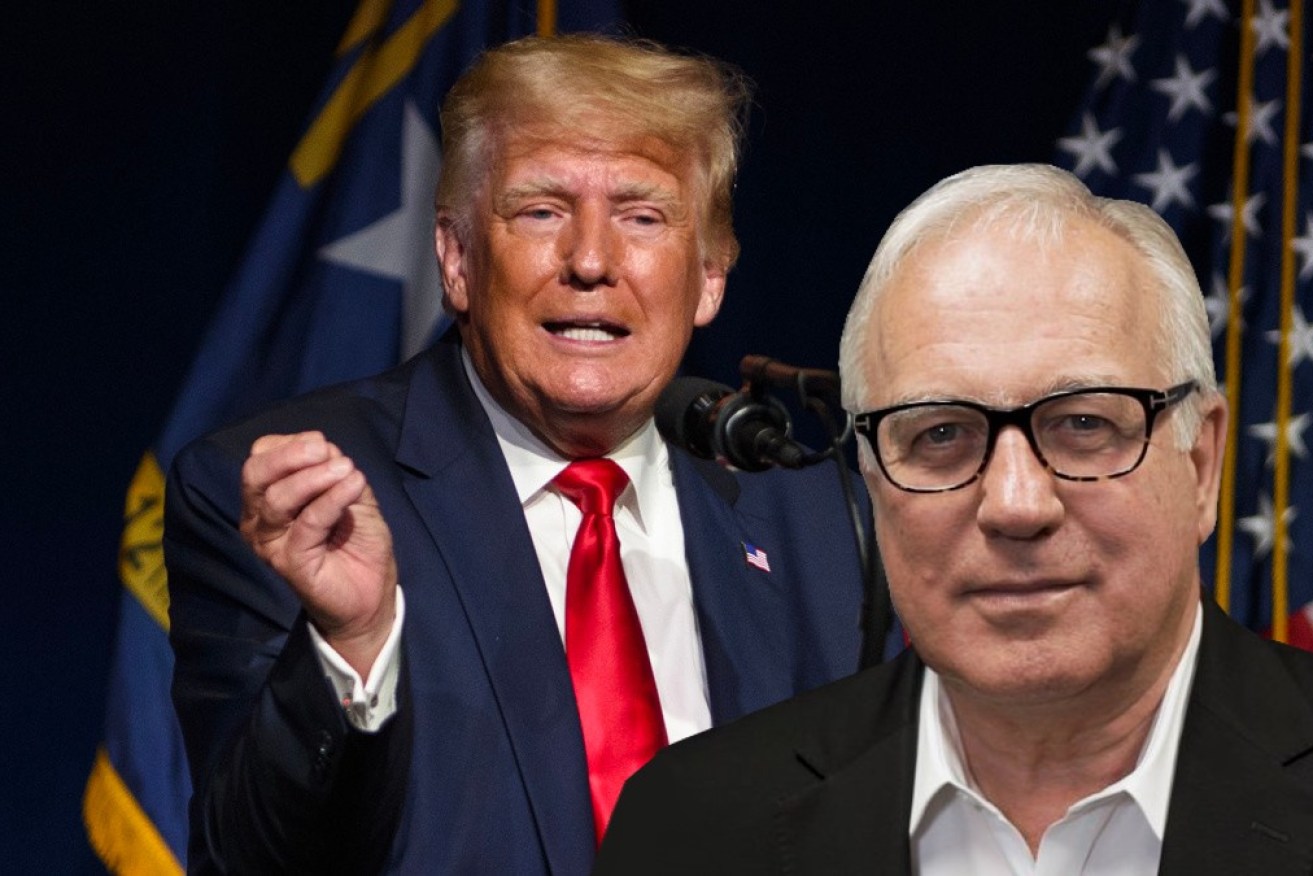Alan Kohler: We need to prepare for the heat of a second Trump presidency


Donald Trump has repeatedly called global warming a hoax, and promised to end the “war on coal”. Photo: TND
One consequence of Joe Biden’s disastrous performance in the first presidential debate, and arguably the most important one, is that the world will not achieve net-zero carbon emissions by 2050.
Maybe if Biden now stands aside someone else could beat Donald Trump, but unless that happens, Trump wins and reinforces the shift to the right that’s already happening in Europe.
And ever since the fossil fuel industry persuaded the world’s conservatives that global warming was a left-wing plot, after both Reagan and Thatcher advocated action to prevent it, that means less, or no, action to reduce emissions.
Trump has repeatedly called it a hoax, promised to end the “war on coal” and pull out of the Paris agreement.
Unless Biden quits, Australia and the world should be preparing for a second Trump presidency, which means preparing for global warming of a lot more than the Paris target of 1.5 degrees Celsius – at least 2 degrees, probably more.
Net zero by 2050 target
Actually the truth is that net zero by 2050 and 1.5 degrees is virtually impossible anyway.
We should keep the target of net zero by 2050, but not fool ourselves that it can be achieved, or that even if we did pull it off, it would make any difference to the temperature of the planet.
The 2024 Integrated System Plan from the Australian Energy Market Operator last week made it pretty clear that Australia has zero hope of being net zero by 2050.
In summary, AEMO said the rate of investment renewables must double, storage investment has to quadruple, and there has to be a four-fold increase in rooftop solar. The plan will cost $122 billion to 2050, says AEMO.
Discouraging signs
Any sign of that happening, or anything like that being budgeted? Nope.
Of course that’s doubly true if the Coalition is elected and replaces coal with nuclear, which would basically involve delaying the phase-out of fossil fuel electricity generation while waiting for nuclear reactors to be built.
Electricity accounts for about a third of Australia’s emissions while the only other part of the Labor government strategy – 5 per cent per annum reduction by the big emitters under the Safeguard Mechanism – is another 28 per cent or so.
That leaves 40 per cent for transport, household gas, export gas and agriculture, for which there are no plans at all. Net zero is out of the question.
But what Australia does or doesn’t do is irrelevant beyond domestic politics.
What matters is what the US, Europe, China and India do, and they have collectively increased, not reduced, the use of fossil fuels since the Kyoto Protocols were signed in 1997. It’s halfway from Kyoto to 2050 and the action hasn’t started.
If Trump wins in November and Europe takes a right turn, it’s more than likely that the whole thing will simply be abandoned.
How to achieve goal
In a recent essay one of the world’s great energy scientists, Vaclav Smil, laid out what has to be done to achieve net zero by 2050:
- Convert more than 4 terawatts (a million million watts) of electricity-generating capacity now installed in large coal- and gas-fired stations to non-carbon sources
- Substitute nearly 1.5 billion gasoline and diesel engines in road and off-road vehicles
- Convert all agricultural and crop processing machinery, including about 50 million tractors and more than 100 million irrigation pumps, to electric drive or non-fossil fuels
- Find new sources of heat, hot air, and hot water used in a wide variety of industrial processes (from iron smelting and cement and glass making to chemical syntheses and food preservation) that now consume close to 30 per cent of all final uses of fossil fuels
- Replace more than half a billion natural gas furnaces now heating houses and industrial, institutional, and commercial places with heat pumps or other sources of heat
- Find new ways to power nearly 120,000 merchant fleet vessels (bulk carriers of ores, cement, fertilisers, wood and grain, and container ships, now running mostly on heavy fuel oil and diesel fuel)
- And nearly 25,000 active jetliners that form the foundation of global long-distance transport, fuelled by kerosene.
All of which must be done in one generation, even though the use of fossil fuels has not yet peaked and no large-scale zero-carbon industrial processes have yet been deployed.
Hydrogen factor
Smil also did some sums on hydrogen, as I did here four weeks ago.
Seventy per cent of the world’s steel, or 1.4 billion tonnes, comes from blast furnaces and 30 per cent from electric arc furnaces melting scrap. In 2050 it’s estimated that total steel required will be 2.6 billion tonnes a year. Even if the electric arc furnace share is increased to 35 per cent, 1.7 billion tonnes of green steel (made with hydrogen instead of coal) would be needed, which would require 91 million tonnes of hydrogen.
Ammonia is even more important: About 85 per cent of annual production is used to make fertiliser, without which “about half today’s world population could not survive”, says Smil.
Ammonia is now synthesised with nitrogen taken from the air and hydrogen produced through a reaction from natural gas, coal, and liquid hydrocarbons; the carbon-free process would need about 44 million tonnes of green hydrogen by 2050.
So together carbon-free steel and ammonia will require 135 million tonnes of hydrogen. Add in transportation and heating, other industries (from glassmaking to food preservation), and the total demand for green hydrogen could be easily as high as 500 million tonnes by 2050.
Electricity needed to produce that would equal about 86 per cent of total global electricity consumption in 2022. Just to produce enough hydrogen.
Massive cost
McKinsey & Co puts the total cost of global decarbonisation at $US440 trillion, or $US15 trillion per year, which would require all affluent countries to spend 20 to 25 per cent of annual GDP on the project. For Australia that’s $500 billion to $650 billion per year, which is about 85 per cent of all tax revenue collected by all levels of government.
In other words, ridding the world of fossil fuels by 2050, even if some of it is done with offsets from planting trees, is impossible.
As Vaclav Smil says: “wishful thinking … should not be used or defended by saying that doing so represents “aspirational” goals. Responsible analyses must acknowledge (reality).”
How should Australia prepare for this reality?
Well, apart from getting ready for the floods, bushfires and coastal erosion and the millions of refugees we’ll need to house, we should also build a hydrogen and green steel manufacturing industry.
Unless the world’s scientists are wrong, at some point political and business leaders will hit the panic button, and desperately look for ways of reducing fossil fuels to save themselves.
As the country with the most sunshine hitting it on the planet, we should get ready to supply it.
Alan Kohler writes weekly for The New Daily. He is finance presenter on the ABC News and also writes for Intelligent Investor








